nscampbell - Jul 27, 2008 3:23 pm - Hasn't voted
InjuriesThis might seem like a stupid question, but typically what kind of injuries does a lightning victim suffer from - I'd expect burns at the very least, but to what degree? is there any chance of heart attack? or is that dependant on the condition of the victim before the strike? Thanks for the 30/30 rule I hadn't heard that one.
lcarreau - Jul 27, 2008 4:20 pm - Hasn't voted
Re: InjuriesNOPE, no such thing as a stupid question. Thanks for your interest! Naturally, there's going to be electrical shock and burns. Because of the initial surprise, a person can suffer from heart attacks. (Yes, the TWO factors are prior health and condition of the victim, and the closeness of the victim to the bolt or charge.)
Didn't mean to sound morbid. My friend Verl would have wanted
this information to be shared with others.
I will add something that occurred in Fort Benning, Georgia in
1989, describing the effects of lightning injury. Thanks.
Rob Ricks - Jul 27, 2008 4:00 pm - Voted 10/10
Great ArticleEspecially in light of my Cooper Spur incident. There are lots of dangers mountaineers face, but lightning strike usually causes the most hardy souls to blanch. Thanks for sharing. Rob
lcarreau - Jul 27, 2008 4:39 pm - Hasn't voted
Re: Great ArticleThank you, Rob! The thing with those PAC NW volcanoes is:
they often create their own weather. I am former-military, and
everything I learned THEN cannot prepare me for a sudden crack of
lightning NOW. I am completely humbled by Nature's fury!!
MoapaPk - Jul 28, 2008 11:25 am - Voted 10/10
interestingThe car acts as a Faraday cage -- and one doesn't want to touch any metal in the car while waiting out the storm.
I once compared the deaths on Long's Peak, from different causes. Surprisingly, lightning was rather low on the list.
There is still a lot of controversy about the best behavior when caught above timberline. Your stance reminds me of the old duck-and-cover -- "bend over and kiss your ass good-bye!"
lcarreau - Jul 28, 2008 12:01 pm - Hasn't voted
Re: interestingYeah, you can never have enough information when it comes to
lightning. BTW, the state of Colorado ranks 9th on the LIST of
US (states) with the most lightning-related injuries.
I tend to get 'religious' really fast when I hear a nearby crack.
I will post another photo showing why Lower Bowns Reservoir and
the Boulder Mountain area of southern Utah receive so many strikes. Meanwhile, please continue to DUCK-and-COVER !!
[I assume Nevada is in the top 15. Of course, most of it lies
within the rainshadow of the Sierra Nevada, so you guys are
protected to a specific degree.]
MoapaPk - Jul 28, 2008 12:33 pm - Voted 10/10
Re: interestingNevada is actually fairly low on the list. In terms of number of strikes, New Mexico (where I used to live) is very high, expecially along the central corridor (Albuquerque, etc.); it just isn't a populous state. It was common to hear of a lightning death every 6 months to a year, for kids just standing out in a parking lot, often in the sun, while a storm brewed nearby.
Some years ago I found a Utah list of the activities people were engaged in when struck. Agriculure was high, as were flatland activities (at lakes, playing golf). Mountain stuff and hiking does register, but not that much, probably because of the much smaller numbers participating:
Utah lightning deaths
It would be nice to know where the tents were that were struck, and what sort of hiking was involved.
lcarreau - Jul 29, 2008 1:10 pm - Hasn't voted
Yes,I appreciate the response. What I'm looking for specifically are
comments regarding your personnel experiences with lightning, rather it be mountaineering activities, OR on the initial approach to your favorite peak.
Has anybody actually seen St. Elmo's Fire?? Nope, I'm not talking about the movie.
Ball lightning is often erroneously identified as St. Elmo's Fire.
(They are separate and distinct meteorological phenomena.)
Larry
RobSC - Aug 1, 2008 5:55 pm - Voted 10/10
Re: Yes,Personally, I've never seen St. Elmo's Fire but my dad has told me of the day that he climbed the Grand Teton back in the early 1960s. When they got to the summit there was a huge storm bearing down on them they left in a hurry and had just made the rappel back to the Upper Saddle when the storm hit. At some point in there he looked up and the upper reaches of the mountain were glowing with St. Elmo's Fire. My brother in law is an airline pilot and says that it is fairly common on the windshields of airplanes.
Lightning is scary. When I reached the top of Margherita Peak in the Rwenzori Mountains the sign at the summit saying it was the highest point in Uganda started humming and the hair on the back of my neck lifted. I took off down the slope but the strike never came. Later that same day my ice axe started buzzing with electricity until a bolt struck nearby. Both of these were from storms imbedded in a thick cloud cover so that we couldn't see the location of the storms.
One thing that I've noticed for developing storms is that when the bottom of the cloud gets a dark, rippled appearance there is almost always a lightning strick within a few minutes. For me the developing storm that is poised to strike but hasn't yet is the most dangerous. I've heard that they also generate most of the fatal lighning strikes since people have generally gone for cover on more active storms.
lcarreau - Aug 1, 2008 6:32 pm - Hasn't voted
Re: Yes,Thanks, Rob. Fascinating; the Tetons are the target for some
intense electrical storms. It would be nice if they came out with
a device that could DETECT when and where a lightning bolt WOULD
strike. "A GPS-related lightning bolt unit." Something like that.
Hey, perhaps somebody is already toying around with that idea??
I play it safe around electrical storms. Ever since the time I
saw a bolt actually strike the water, I said to myself:
"Self, I believe lightning can strike just about anywhere !!! !!"
ClimberMan420 - Aug 17, 2008 1:15 pm - Hasn't voted
Climbing The Andes in the rainy seasonYour response reminds me of an instance I had in Northern Chile while hiking up to high camp on Volcan San Pedro. Weather was fine that day until a sudden snowstorm cloud blew in. An unusual tingling sensation began on the top of my head and began to burn me, confused I took of my hat and rubbed it away as if an insect was biting me. A buzzing noise began and my iceaxe(on the side of my pack) began to buzz and vibrate then shocked me powerfully. I grabbed my axe from my pack, threw it away and ran down hill under some rocks. immidiatelty here the buzzing and static electricity left me. The cloud quickly passed without ever firing any lightning and the sun came out. I continued to base camp, acclimatized for 3 days and then summitted. A rather frightning experiece.
exp 2.
I was climbing a 5000m scramble outside Potosi, Bolivia in the cordillera Kari Kari. I summited my peak and black clouds swireled around me. Upon reaching the very peak an intense amount of static electricity was present making my head tingle and hair stand straight, I quickly scrambled down below the top of ridge and it was gone, when I returned to the top of the ridge it was there again. i took a fast descent line into the valley. These were only the begginning of my experiences with lightning in Potosi as I summited most of the high peaks there in the rainy season when the fine morning turned into rough hail storms and lightning shows.
These experiences I had were to be honest some of the most invigorating experiences of my life but indeed very frightning especially because I did not fully understand what was happening.
Thanks for sharing your article!
lcarreau - Aug 18, 2008 6:21 pm - Hasn't voted
Re: Climbing The Andes in the rainy seasonThanks, ClimberMan! There's all the proof suggesting (proving)
a worldwide occurrence of lightning-related experiences. This
'Potosi' must be a fantastic place in Bolivia, I will definitely
do some research on that area.
I know the Canadians really have many (incredible) mountaineering beta/stories to share. Thank you again, CM !!!
How about Australia? Does anybody have lighting-related experiences from the Land Down Under ?? Please feel free to add!
Larry of AZ
madeintahoe - Jul 29, 2008 2:00 pm - Voted 10/10
Thanks LarryHi Larry...I am so very sorry about your friend Verl. Thank you for sharing this..great reading.
I am deeply afraid of lightning...maybe because hubby and I got caught in it twice really really bad..scared the heck out of us. So I tend to be probably way to cautious now when I am out hiking especially peak bagging..I watch the weather really close and if I feel not safe I have no problem turning around and saving the peak for another day.
Thank you again...is it blazing hot there?
lcarreau - Jul 29, 2008 3:01 pm - Hasn't voted
Re: Thanks AnitaAs always, thanks for your concern! The heat isn't so bad in the
Pinyon pine-Juniper Woodland at 4,900'. We have been dealing
with frequent monsoonal thunderstorms AND intense lightning.
Anita, I assume you are working indoors. Well, some of us have to
work OUTDOORS, and lightning can be a frightening event indeed.
Agreed that free choice and self-preservation are both WISE options. Accidents DO happen very swiftly, however.
Are you familiar with the bear cub that was rescued by the CA
firefighter, and is now being cared for in South Lake Tahoe???
Any WORD on its well-being? Please...keep me informed & THANKS!
Larry
FlatheadNative - Jul 29, 2008 10:45 pm - Voted 10/10
Informative articlevery nice job Larry. I would like to add this to Compilation of health related articles. cheers
lcarreau - Jul 30, 2008 12:09 am - Hasn't voted
Re: Informative articleThat would be great, Pastor! I just read your outstanding article
on 'sun-related protection.' That might come in handy for me here
in central Arizona. I need to protect my eyes more, because
they're the only eyes I have ... other than my wife! TAKE CARE!!!
lcarreau - Jul 30, 2008 8:55 pm - Hasn't voted
Re: ThanksNot a problem. My intention was to put together something that
other people could relate to; while I remembered my friend.
Nelson - Jul 31, 2008 12:18 pm - Voted 10/10
Don't feel a thingMy wife can report than when you are directly struck by lightning you don't feel anything, and you never knew what hit you.
We thought she was more special than 1/300 odds. The NWS says 1/500 that you will be affected by someone struck (with ten people affected for each victim), and that anyone has a 1/5000 chance of being struck in an 80 year lifetime. Still, those are lower odds than most people would guess.
ODDS OF BECOMING A LIGHTNING VICTIM
Thanks for posting.
lcarreau - Jul 31, 2008 1:13 pm - Hasn't voted
Re: Don't feel a thingThanks for the important NWS link! I know that lightning is an
attractive phenomena; and hopefully my friend didn't feel anything when he died.
According to the NWS, a THIRD of all lightning-related injuries occur during recreational/sports-related activities. This is where mountaineering comes into play, so I'm assuming that lightning could possibly affect somebody on a mountain.
Sorry to hear about folks getting struck by lightning. The last
time my wife & I were in the Inner Basin of the San Francisco
Peaks in n. AZ, we were completely surrounded by lightning bolts.
Luckily, we were at treeline, and were able to duck and cover
beneath a Corkbark fir.
I have seen lightning strike a body of water here in central AZ.
I have seen people swimming/boating in that lake during a T-storm. That was their own choice to be there on that lake,
and the odds were "more-than-likely" in their favor.
The Ogre - Aug 3, 2008 3:32 am - Voted 10/10
I have been struck......but it wasn't bad. I was running across the street to my car, in the city of Rochester, NY. I knew full well that there was an electric storm, but I was not too worried because of the tall trees and utility poles in the area (which would likely spare me from a direct hit). Besides, I'm a risk taker. So I ran down the steps from my friends' house, toward the street and my car beyond, thinking that I was just going to get drenched by the rain...
In fact, one of those trees took a strike, and I was rewarded for my stupidity. I never saw it hit, but I got a nice, strong jolt right up the leg, from the ground current. It seems my sandaled foot was right in a puddle. I never skipped a beat; across the road and right into my car. I wasn't hurt, but I was sure shaken.
I am pretty sure that the bolt landed behind my friends' house. I'm just glad it didn't land in front of their house, where I was.


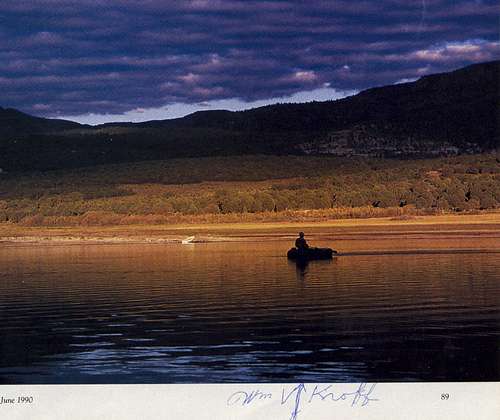
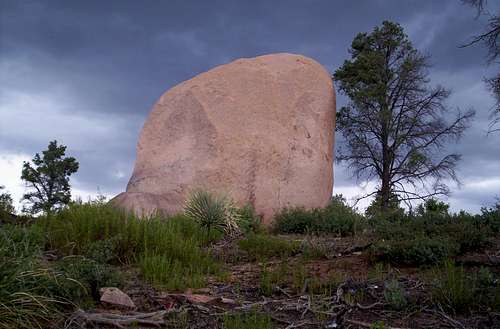
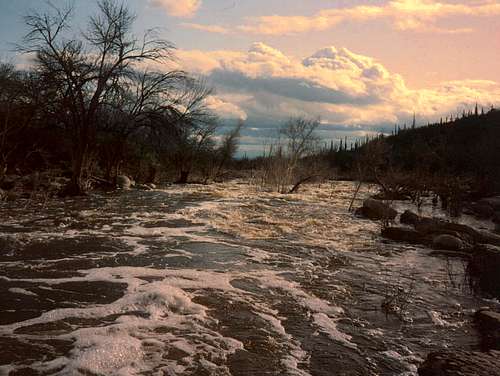

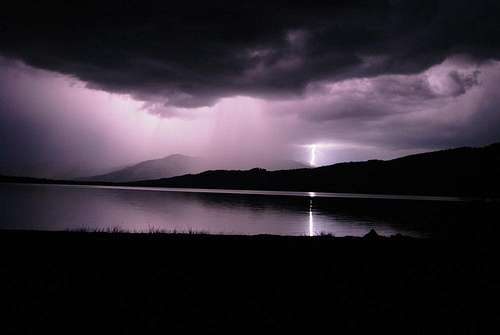
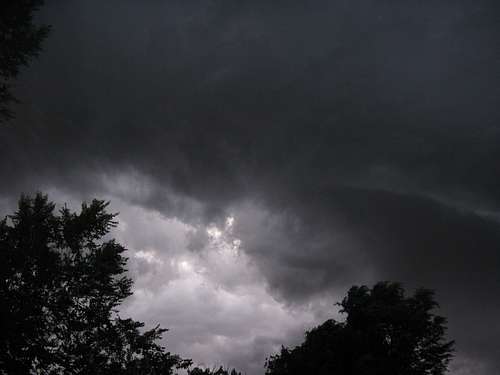

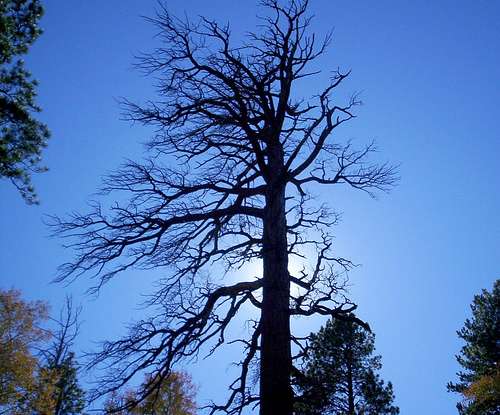










Comments
Post a Comment